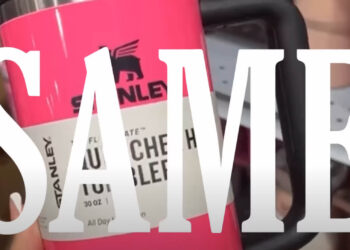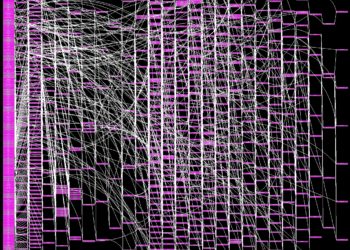January seems like the perfect time to look forward and think about what we might expect to see this coming year. Although none of the Chefs have claimed to be clairvoyant (at least not publicly), they all have slightly different views of the scholarly publishing and communications ecosystem.
So this month we asked the Chefs: What do you see on the horizon for scholarly publishing in 2016?
Joe Esposito: When we talk about what is coming up in scholarly communications in 2016, we can’t use the word “horizon.” 2016 is not the horizon; it is right now. In fact, from a business point of view, it was 3 years ago. You can’t do anything in fewer than 3 years. What will happen in 2016 was put into motion in 2013. So the question Kitchen readers should be asking is, What was I doing in 2013? If the answer is that you were making sales calls or teeing up litigation of some sort, then you don’t have to worry about 2016 because your competitors have already beat you. The point is not simply to take the long view (as Keynes said, in the long run we are all dead) but to take a view that corresponds to your capital investments. If we want to know what is in store on the “horizon,” meaning 3 years from now, study your capex budget today.
Rick Anderson: My three predictions are pretty pedestrian and probably unsurprising.
- On the near- to midterm horizon I see growing controversy around the issue of impact metrics: as my fellow Chef Joe Esposito has recently pointed out, the impact factor (IF) “has been dismissed by everyone except those who make decisions.” Both elements of that observation are important: those who make decisions about tenure and promotion (among other things) remain in thrall to the IF; at the same time, virtually everyone in the scholarly-communication system complains, loudly and constantly, about how unfair, unreliable, and generally crappy the IF is, and prominent figures in the system continue to produce and promote alternative measurement tools. I may be wrong, but I suspect this conflict will come to some kind of a head sometime soonish.
- Also coming soonish, I think, will be some kind of a reckoning between scholars and scientists who want to retain some or all of their traditional copyright prerogatives and the growing number of funding agencies and publishers that require CC BY licensing as a condition of funding or publication. This day of reckoning has been delayed, I think, by a general unawareness on the part of authors as to (a) these emerging requirements and (b) what CC BY means. As awareness grows, I suspect pushback will grow as well.
- I anticipate continued quick (and probably accelerating) growth of Gold OA, and continued relatively stagnant growth of Green OA. The former benefits (for better or worse) from its market-based nature: Gold OA publishers, including publishers of hybrid journals, are selling a service in a competitive marketplace, one that seems to function pretty well. Those promoting Green solutions, however, have to overcome massive inertia on the part of product suppliers — authors — most of whom have yet to show much inclination to contribute, even when technically required to do so.
Alison Mudditt: I’m interested in the ways in which the opposing trends towards consolidation and fragmentation are playing out in scholarly publishing. The clear trend over the past few decades has been towards consolidation and I don’t see this kind of strategic thinking changing among the big players as they look to both buy market share and extend their offerings. Yet the paradox is that our markets are in many ways fragmenting at a time when these global organizations require increasingly large markets to drive both growth and profitability.
So while the big players continue to hold some considerable advantages, we’re also seeing innovative and non-traditional competitive strategies from smaller market players. Organizations such as university presses and society publishers have considerable strengths – trust, brand recognition, close relationships with their audiences – and an increasing number are stepping outside traditional boundaries to build new ways of serving their audiences. They may not have the scale of their larger competitors, but they’re also less wedded to legacy models and can move more easily to capture both new opportunities and dissatisfaction with current models. I think we’re going to see increasing activity in this space that leverages an ability to capture and retain authors and audiences with tightly integrated offerings in ways that cannot easily be replicated by large commercial competitors.
Alice Meadows: I’m not very good at gazing into the future so my predictions for 2016 are more wishful thinking than informed projection. First and foremost I would love 2016 to be the year when gender disparity in our industry starts to get properly addressed — as in, capable women are promoted to really senior positions, especially in some of the larger organizations where we are still woefully under-represented at the top. It does feel as if there’s more recognition that things need to change so, you never know, it just could be the start of something finally happening on this front.
With my ORCID hat on I’m hoping this is the year when we reach the tipping point in terms of adoption and use of ORCID IDs both by researchers and their organizations. Even before I joined ORCID I was a strong believer in the value of a strong and reliable research infrastructure and the importance of standards and persistent identifiers in making that happen and I feel even more passionately about this now. Again, there have been encouraging signs so — fingers crossed.
Last but not least I hope this will be the year when we start to collectively acknowledge the importance of sustainability in scholarly communications and begin building some consensus around what that means — both for commercial and nonprofit organizations. Geoffrey Bilder, Jennifer Lin, and Cameron Neylon wrote a powerful piece on this in regards to an open scholarly infrastructure which is well worth a read. If enough people agree with the principles they propose then perhaps 2016 will be the year that we also start to put those principles into practice.
Michael Clarke: 2016 is shaping up to be the year of the authoring system, or “YAS” as future historians will undoubtedly call it. If you are an author that is fed up with writing your papers using ancient tools like Microsoft Word, at wits end wrestling with the genial and sleek but ultimately disappointing Google Docs, or are simply looking to master a new software package, your prayers have been answered. New authoring systems specializing in the workflows of researchers, scholars, and students are proliferating like drones over Silicon Valley. Organizations that have recently released or are developing authoring systems of one flavor or another include Overleaf, Manuscript.app, Dartmouth Journal Services, Authorea, River Valley, PLOS, and the American Psychological Association. Like new organisms exploiting a particular ecological niche in the midst of Cambrian explosion, these systems have different features and different aims. Overleaf was designed for mathematicians and other users of LaTeX. APA Style Central is designed to help students learn to write using APA style. Other systems are designed to export structured XML, thereby reducing (publisher) costs (presumably this savings will filter back to authors in the form of reduced page charges or APCs). Will more authoring systems join the field before the period drops in Times New Roman Square and the YAS reaches its full stop? It is hard to know. But I for one plan to order an extra supply of coffee pods, delete my SnapChat account, ground my fleet of recreational drones, put my Oculus Rift under lock and key, give the puppy an extra bone, hang a “do not disturb” sign on the door, and start writing.
David Smith: “What’s that coming over the hill? Is it a…”
I think security is a big thing lurking just over the horizon or under the surface. The last year has brought wave after wave of security vulnerability headlines as component after component of the building blocks of modern communication have been found to be wanting in some pretty fundamental ways. Then there’s the headlines generated as organization after organization finds that they have been penetrated and had their customer data stolen. Gloating at the people who were revealed as users of Ashley Madison, or had private images stolen from Apple’s cloud services, is to utterly miss the point; in the modern world, one cannot opt out of the sharing of personal data with third party systems. The scholarly publishing industry is frankly built on haphazardly constructed, organically developed infrastructure; much of it constructed before the capabilities of the modern hacker could be dreamed of, let alone architected against. We need to focus on this in 2016 and beyond. It will benefit ALL members of the scholarly publishing community. It’s not an IT problem. It’s a business problem; an organization problem; a customer problem; a supplier problem; everyone’s problem.
Phill Jones: Over the past few years, we’ve seen a lot of technologies and promising new ideas emerge from and come into our industry. Perhaps initially, many people were unsure how these new ideas were going to enable publishers to better serve their communities or customers. To some, it even felt like technology was a cost sink that wouldn’t help them become more relevant, sustainable, or profitable. I feel like over the last year, we’re starting to see that change. Among smaller publishers and non-profits, we’re starting to see publishers make use of information technology to add value to their businesses. Going further, certain large commercial publishers are already thinking of themselves primarily as information companies that provide services rather than only licensed content. In some ways, the next few years are going to be less exciting, or at least less novel, because to support these new ideas, a lot of work will have to go into infrastructure development, taking the shift away from the shiny and new, to some extent. Organizations like Crossref, ORCID and NISO are already leading the way here. What will change is that standards will feel like less of a compliance issue and bit of a chore, and become something with more obvious business value.
Judy Luther: I consider two trends a sign of the time. First is the evolution of how content is budgeted and the second is the curation of open access (OA) content.
With library budgets tilting towards 90% renewal purchases (books and journals) and 10% one-time purchases (single books, archives), prior methods of measuring acquisitions are changing. Does it matter if it is a book or journal when it’s part of a larger collection on a single platform that is an annual purchase? Legacy distinctions of whether content is print or electronic and whether it is acquired or accessed is taking a back seat to whether the title, product or service will remain in the budget every year. Collections of titles on platforms sold by large publishers or vendors dominate the materials budgets reducing the amount available for selected titles. It’s not surprising that librarians are more engaged with locally developed content where their role is critical than with commercially available content that requires less involvement.
Up till now Google Scholar has been the primary discovery tool for OA and paid scholarly content. This may change with the launch of two new services: ACI, which indexes and hosts 10,000 curated scholarly blogs and 1Science ,which indexes all OA peer reviewed articles wherever they are found. This new level of selective authorization and enhanced discovery may allow blogs to be recognized as part of the scholarly discourse and may elevate the use of OA articles within the academic community. At a time when the role of academic indexes been eroded by Google, it will be interesting to see the potential impact that indexes of OA content may have in raising the visibility and use of these resources.
Charlie Rapple: In 2016, I’m expecting to see continued rethinking of the role and remit of scholarly publishers, as they embrace further the evolving digital research ecosystem — for example, the real-world habits of researchers when it comes to sharing information; last year’s STM principles lead on to this year’s efforts by Elsevier and others to quantify this “off grid” usage (“beyond downloads”), and everybody’s talking about (and investing in) workflow as much as, if not more than, content. As well as this reinvention from the inside, scholarly publishing also continues to face disruption from other quarters — with bold claims from new players like Veruscript (“rethinking what is possible in scholarly communication”) and Glass Tree (the academic division of self-publishing veteran LuLu, which proposes to offer “academic publishing without the exploitation”).
That exploitation issue will get worse in 2016 before it gets better, despite the efforts of initiatives such as Think. Check. Submit. and the Coalition for Responsible Publication Resources, as we are effectively the traditional military fighting a guerrilla war — and it seems unlikely that the institutional administrative infrastructures facilitating the guerrilla market will change enough in the near future to cut off supply. On a brighter note, the aforementioned focus on workflow is enabling a thriving scholarly start-up scene with niche innovators re-imagining every aspect of how researchers ideate, undertake and communicate their work. 2016 will certainly bring more of this experimentation, and more of the interesting partnerships between these entrepreneurs — any one of which could be the catalyst for the sort of seismic change that is utterly unanticipated before the fact, and yet so obvious afterwards.
_____________________
Sharing predictions is more fun in a group with plenty of alcohol flowing. We may not have the virtual alcohol, but The Scholarly Kitchen does have an engaged community of different perspectives! Pour yourself a cocktail (or not) and let us know what you see on the horizon for 2016!!
Perhaps we’ll come back to this post in December and see how we did!
Discussion
15 Thoughts on "Ask The Chefs: What Do You See On The Horizon For Scholarly Publishing In 2016?"
For those who missed it, I made my one word prediction here:
http://scholarlykitchen.sspnet.org/2015/12/24/greetings-from-the-age-of-abundance/
The intersections of some of these ideas make for fun speculation. So Alice has high hopes for ORCID, which of course will lead to more personal data and data connections (through Peer Review recognition and perhaps even Charlie’s Kudos profiles) of the type David worries over (rightly). Michael’s authoring systems will further increase this data network.
And authoring systems may facilitate (directly or indirectly) awareness of copyright issues, maybe if they begin to seamlessly interact with submission systems (surely an inevitable outcome sometime down the line) and copyright transfer suddenly seems psychologically odder – more friction – than it did before.
And this relates to some of the workflow issues Charlie mentions. Currently many of the startups work as independent entities not really easing friction throughout the overall flow as they aim to solve smaller problems. But there are hints of this changing, perhaps as the start ups work more closely with the larger publishers and amongst themselves. Which then leads to the consideration of fragmentation/consolidation that Alison notes. Oh, and more data networks of course.
And there’s all the outside things that could go wrong. What happens if China really does crash – what will that do to our strategic thinking?
If Twitter goes belly up? Not as unlikely as we might think. Or what if it’s bought by someone like NewsCorp? How will this affect Open Science. Or even altmetrics?
More to the point: all this suggests another fascinating, frightening, fulfilling year ahead as these and other trends playout with all the intended and unintended consequences.
“And authoring systems may facilitate (directly or indirectly) awareness of copyright issues, maybe if they begin to seamlessly interact with submission systems (surely an inevitable outcome sometime down the line)”
Not so far down the line. Five author environments are already signed-up for Aries’ Ingest service to provide automatic transfer of manuscripts and metadata to the thousands of journals that use Editorial Manager for peer review. They are: Overleaf, Manuscriptsapp, PubRef, Editage and Chronons/Gates Foundation. Several others in the pipeline. All this greatly facilitated by emergence of standards such as JATS and ORCID.
That’s a good point, Richard. And with publishers like Springer and Wolters Kluwer beginning to make use of these services, the time for leveraging the seamless interaction between authoring systems and submission systems has surely arrived.
Sorry to pick on you Rick, but I’d bet against two of your predictions:
1) We’ve heard the anti-Impact Factor voices for ages now, but there’s still no viable replacement for the solution it provides (albeit, poorly). Though I’d love to see a more rational system put in place, there needs to be a set of shortcuts available for dealing with scale and a lack of subject-specific knowledge. Grant/Job applications usually number in the hundreds (if not the thousands), and these need to be rapidly narrowed down to a very small number of final candidates. There needs to be a mechanism for quick triage. You also have people required to make decisions about researchers who are not researchers themselves, or who are researchers making decisions about someone who works in a different field. Again, a tool is needed to allow minimal-effort judgements to be made without having to learn an entire new intellectual field.
Until there is some better replacement offered (and no, reading thousands of papers is not a viable replacement), then the IF is going to be hard to dislodge. Factor in also that those most reliant upon the IF are likely somewhat removed from the bibliometric discussion of its flaws.
3) Given that this year we’re going to start to see more and more implementations of CHORUS going live, and US funding agency policies beginning to go into effect, shouldn’t we expect to see a growth in Green OA?
David, I don’t disagree with anything you say about the IF.
As for Green OA: no, I don’t think we should expect to see significant growth this year. My staff will tell you that one my favorite slogans when it comes to formulating policy is “Put inertia on your side,” and inertia is not on the side of self-archiving. Generally speaking, authors don’t seem to care about archiving their articles. Even when they’re required to do so, their compliance rates are low. Most of the US funding agency policies are relatively new, and to the degree that they are successful in overcoming authorial inertia, I don’t think it will happen this year. Or next. Will there be some growth in 2016? Sure; I don’t expect self-archiving to decline, and CHORUS will make a difference. But it will mainly make a difference among authors who want to self-archive but have found it too cumbersome — it won’t make much difference among those who don’t care, and I suspect that the latter number is larger than the former. I think the impact of both CHORUS and the recent funder requirements will mostly be felt later than 2016.
All of this could be dead wrong, of course.
And as always, when one discussed OA, it comes down to varying definitions. I agree with you 100% that those agencies and institutions expecting researchers to self-deposit in a repository are in for a disappointment in terms of compliance levels. But with CHORUS, you will see an increasing amount of funded literature being made freely available in the journals themselves (at the end of the required 12 month embargo period). Elsevier and Wiley are already up and running with this, as two of the biggest examples. So if you consider that “Green OA”, then we will see more of that happening. If you limit the definition of “Green OA” to places outside of the journals, then you’re absolutely right.
The US Public Access program does not involve self archiving. The Federal government is collecting all funding-related accepted manuscripts and publishing them after a 12 month embargo period. Some are using CHORUS if available and others are looking at CHORUS, but this has no bearing on the publishing of some version of the article. This is roughly 20% of the published literature, quite a bit more than the present APC OA total, I think. These are mandatory research contract requirements so there should be very little “authorial inertia.” A lot of these agency programs kick in in 2016, though not all. The green OA tsunami is coming.
Either you are mistaken, or once again, we’re having some confusion over definitions. If by “self-archiving” you mean a researcher archiving a copy of a paper on their own website, then yes, no plans involve that. If by “self-archiving” one means that a researcher is responsible for depositing a copy of their paper in their agency’s approved archive, then nearly all of the US public access plans require this. Those using PubMed Central require this type of self-archiving. Some of those using CHORUS to point to a free version in the journal also require some form of self-archiving by grant recipients.
And regardless of “mandatory” rules, compliance levels continue to be fairly poor for these sorts of policies. The NIH is only able to tout strong numbers (still not 100%) because 75% of what they get is not self-deposited by authors, but instead is deposited on behalf of authors by publishers. Many agencies have ruled this out in their policies, so we’ll see how well authors respond.
I do not regard delivering a mandatory copy to the government as self archiving. Rick is right that self archiving in a repository has not caught on. Public Access is very different. I am not sure the NIH cases relevant. This is a new program. The point is that it is green and it is big.
As I thought, we were using the same term to mean different things, pretty common in the world of papers and access. What exactly do you mean by “self archiving”?
I think the NIH is extremely relevant as it provided the blueprint used for the OSTP policy, and it is the basis for the HHS, NASA and NIST policies. Unlike the OSTP policies, the NIH’s policy is required by law (since 2008). It is worth noting that (and the Wellcome Trust saw the same thing) until the NIH put into place a very serious monitoring and enforcement effort, compliance was poor. Even with that in place, David Lipman continues to lament how poor researchers are at following this “mandatory” policy.
But I agree with you that through more automated programs like CHORUS and through at least some (likely low for the near term) deposit requirements, Green is going to see a lot of growth.
While it’s a requirement with no carrot and no stick, of course growth’ll be slow. Note that some fields (e.g., Astronomy) have ~100% green open access, because the arXiv is overwhelmingly the tool used to discover papers; papers not on the arXiv get less than a third of the citations of regular papers. With a carrot …
Publishers who place ebooks in aggregations like JSTOR, Project Muse, etc. face a continuing challenge about the effects on paperback sales for course adoption. For most university presses the revenue from paperback sales constitutes a sufficiently large percentage of overall income that they can ill afford to make wrong guesses about what books will succeed in the course-adoption market. I suspect some resolution of this tradeoff will happen sooner rather than later.




